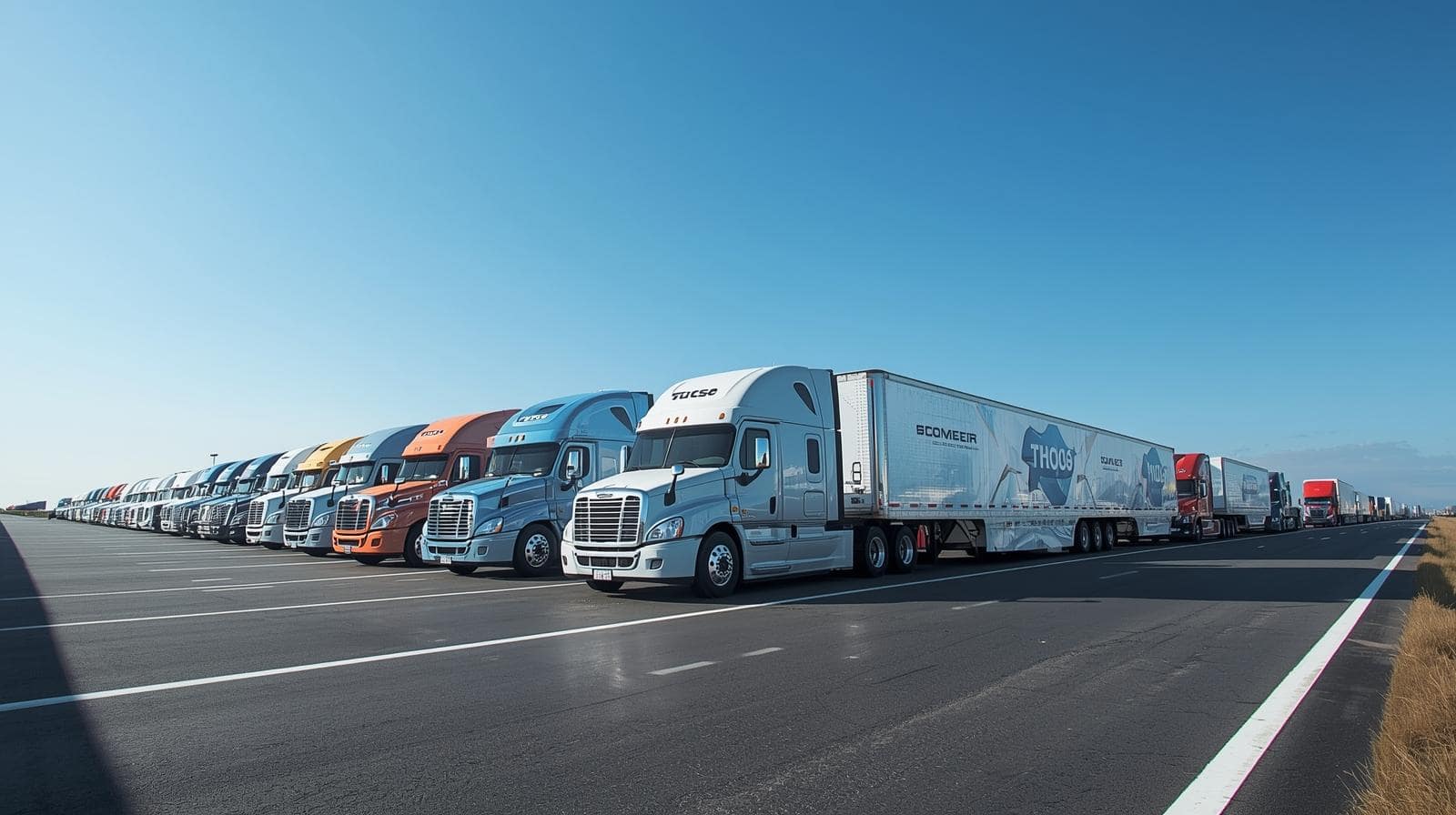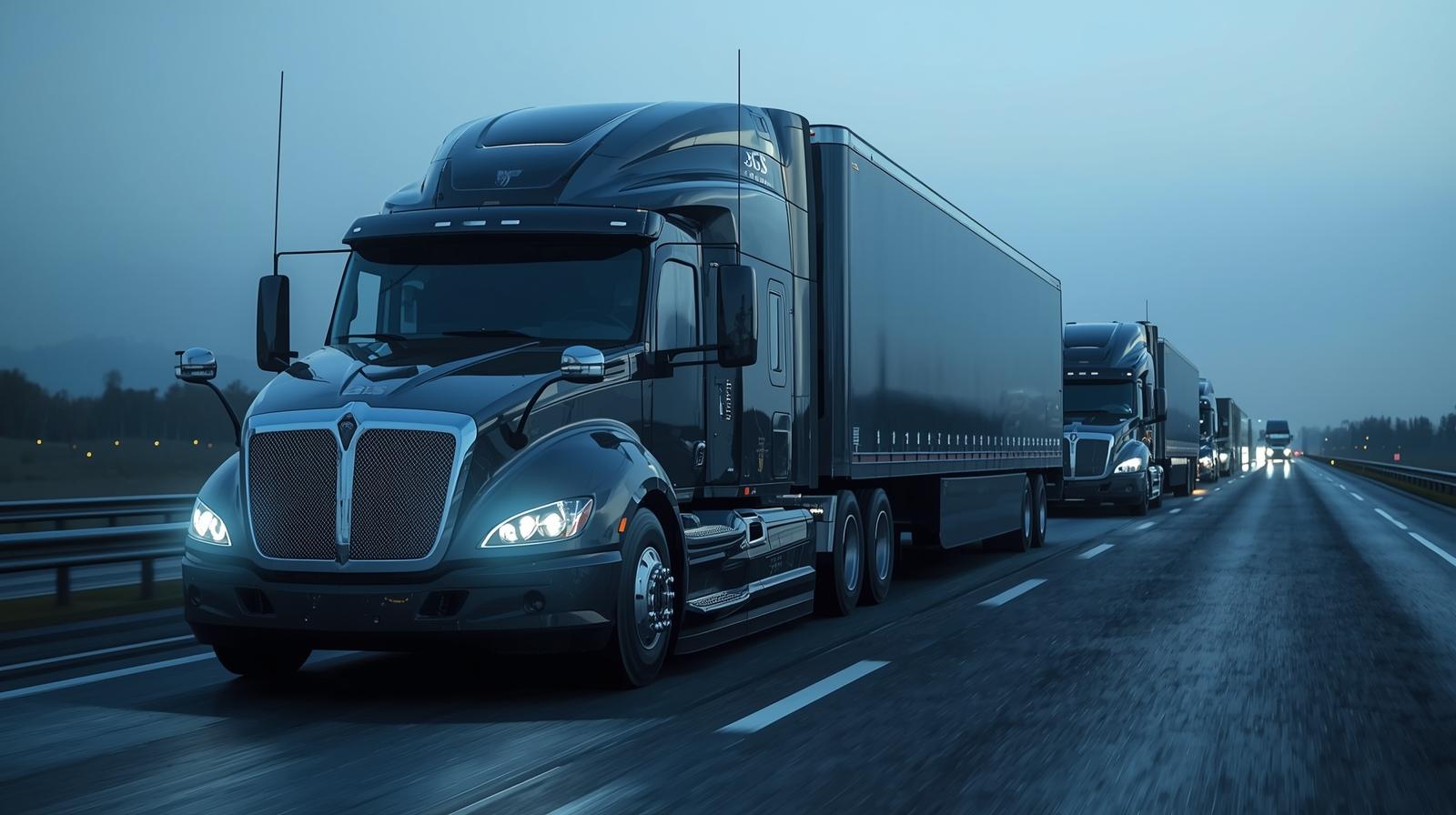In the trucking industry, understanding regulations and rules is crucial for maintaining compliance and ensuring smooth operations. One area that often raises questions is personal conveyance — a term that refers to the use of a commercial vehicle for personal purposes outside of regular work hours. As with many aspects of trucking, personal conveyance has specific rules and guidelines set by the Department of Transportation (DOT) to ensure it is not abused. For fleet operators and truck drivers, it’s essential to understand how personal conveyance in trucking works, what the rules are, and how to avoid potential violations.
This article provides a comprehensive look at what personal conveyance is, the rules that govern its use, and how truck drivers and fleet managers can navigate these regulations to ensure compliance. We will also discuss the personal conveyance limit and how to avoid violations related to the DOT’s personal conveyance rules.
What is Personal Conveyance in Trucking?
Personal conveyance refers to the use of a commercial vehicle for personal purposes when the driver is off duty or on their break. Under certain conditions, the truck can be used for personal errands, such as traveling to a hotel, visiting family, or even driving to a nearby restaurant for a meal. However, it’s important to note that personal conveyance in trucking is a regulated practice, meaning there are clear rules that determine when and how this privilege can be exercised.
Key Features of Personal Conveyance:
- Personal Use Only: The truck is used for non-work-related activities. The driver cannot use it for commercial purposes or hauling goods during personal conveyance.
- Off-Duty or Rest Period: The driver must be off-duty or on a break during this time.
- Compliance with Hours of Service (HOS): The use of personal conveyance does not interfere with the driver’s Hours of Service regulations.
The concept of personal conveyance provides drivers with some flexibility, allowing them to use the truck for personal activities without violating regulations. However, understanding the fine line between legitimate personal conveyance and non-compliant activities is critical.
Personal Conveyance Rules
There are specific personal conveyance rules set by the Federal Motor Carrier Safety Administration (FMCSA) that all commercial vehicle operators must follow. These rules are designed to prevent misuse of personal conveyance and ensure that drivers remain compliant with Hours of Service (HOS) regulations.
Key Rules for Personal Conveyance:
- Off-Duty Status: The driver must be off-duty or on a rest break. Personal conveyance cannot be used while the driver is working or actively engaged in driving for commercial purposes.
- Personal Use Only: The vehicle must be used for personal errands. This includes activities like driving to a hotel, attending a personal event, or visiting a family member. It cannot be used for activities like moving freight or performing work-related duties.
- Location and Destination: The driver must use the vehicle for personal purposes only. The location where the vehicle is used should be unrelated to the driver’s work, such as parking the truck overnight at a hotel for rest.
- Distance Restrictions: Some companies may have internal policies that limit the distance a truck can be driven for personal use. While the FMCSA doesn’t specify exact mileage restrictions, the personal conveyance limit is typically determined by the fleet operator’s policies or the operational needs of the driver.
- Documentation: The driver must be able to document the use of personal conveyance accurately in their logs to ensure compliance with FMCSA regulations. Electronic logging devices (ELDs) are typically used to track personal conveyance time.
By adhering to these personal conveyance rules, drivers can maintain compliance with the FMCSA while also having the flexibility to use their vehicle for personal purposes during off-duty hours.
How to Use Personal Conveyance
While personal conveyance offers flexibility for truck drivers, it’s essential to understand how to properly use this feature without crossing any regulatory boundaries. Personal conveyance should be used only in specific situations and for limited activities, ensuring that it doesn’t conflict with a driver’s on-duty time or Hours of Service (HOS) requirements.
Steps to Properly Use Personal Conveyance:
- Ensure the Driver is Off-Duty: Personal conveyance can only be used when the driver is officially off-duty or on a rest break. Drivers cannot use the truck for personal purposes if they are still on duty or actively working.
- Track Your Personal Conveyance Time: Drivers should always document when personal conveyance is used. This can be done through the electronic logging device (ELD), which should be adjusted to reflect personal use. This ensures accurate tracking and avoids any potential HOS violations.
- Avoid Commercial Use: The truck must be used exclusively for personal purposes. It cannot be used to haul freight or perform any commercial activity. For example, driving to a customer’s location to pick up freight would be considered a violation of the personal conveyance rules.
- Stick to Reasonable Travel: Personal conveyance should be used for personal, reasonable travel, such as going to a nearby hotel for rest, going to a restaurant, or running personal errands. Long distances, commercial stops, or traveling far from the driver’s location should be avoided.
- Know Your Company’s Internal Policies: Some fleet operators set their own internal policies on the use of personal conveyance. These policies may limit the distance or time a truck can be used for personal purposes. Always check with your fleet manager to understand these restrictions.
By following these steps, truck drivers can make sure they are using personal conveyance properly and in a manner that complies with FMCSA regulations and company guidelines.
Personal Conveyance Violations
While personal conveyance offers flexibility, improper use can lead to violations of DOT rules, which can result in penalties or fines for drivers and fleet operators. Understanding personal conveyance violations and how to avoid them is critical for ensuring compliance.
Common Personal Conveyance Violations:
- Using Personal Conveyance for Commercial Purposes: The most common violation occurs when the driver uses the truck for commercial purposes while on personal conveyance. For instance, using the truck to pick up or drop off cargo or run a work-related errand during off-duty hours is considered a violation.
- Failure to Log Personal Conveyance: Drivers must accurately log personal conveyance time in their ELD. Failing to document personal conveyance time or misclassifying it as on-duty time is a violation of FMCSA regulations.
- Exceeding the Personal Conveyance Limit: Although the FMCSA does not set a hard distance limit for personal conveyance, using the vehicle to travel long distances or far from the designated rest area may raise concerns. Companies often set their own personal conveyance limits for distance and time, and exceeding these limits can result in violations.
- Operating While Still On-Duty: If the driver is still on-duty or has not properly taken a break, using personal conveyance is a violation. Personal conveyance is only allowed when the driver is officially off-duty, and any use while on-duty can result in HOS violations.
- Inaccurate or False Logs: Any attempts to misrepresent or falsify logs related to personal conveyance can lead to severe penalties. Drivers must be honest and accurate when logging personal conveyance hours.
By understanding and adhering to these regulations, both drivers and fleet managers can avoid personal conveyance violations and ensure that their operations remain compliant with DOT and FMCSA rules.
DOT Personal Conveyance Rules
The DOT personal conveyance rules are designed to provide clarity and structure around the use of commercial vehicles for personal reasons. These rules are governed by the Federal Motor Carrier Safety Administration (FMCSA) and are intended to prevent the abuse of personal conveyance while allowing drivers some flexibility during off-duty periods.
Key DOT Personal Conveyance Rules:
- Use Personal Conveyance Only When Off-Duty: The driver must be completely off-duty. If a driver is on-duty, even if they are not actively driving, using personal conveyance is not allowed.
- Limited to Personal Use: Personal conveyance is strictly for personal use only. Any commercial use of the truck, even if the driver is not working, is prohibited. The vehicle cannot be used to transport goods or complete work-related tasks.
- Log Personal Conveyance Time Accurately: Drivers must log the time they spend on personal conveyance accurately in their electronic logging device (ELD). It is essential that personal conveyance is logged as off-duty time to avoid violations.
- Reasonable Distance and Time: The vehicle should be used for reasonable travel distances. While the DOT doesn’t specify a maximum distance, companies may set internal rules limiting the distance a truck can be driven for personal purposes.
- Avoid Commercial Areas: Personal conveyance should not involve travel to or from locations where business activities, such as customer deliveries, are expected. It is meant for personal destinations such as hotels or restaurants, not commercial work.
Personal Conveyance Limit
The personal conveyance limit refers to the restrictions on the distance and time that a commercial vehicle can be driven for personal use under the personal conveyance rule. While the FMCSA does not explicitly set a maximum distance, each fleet operator may establish their own policies to prevent excessive use of personal conveyance. These limits are designed to ensure that drivers use personal conveyance in a manner that doesn’t interfere with Hours of Service rules or compromise safety.
How to Ensure Compliance with Personal Conveyance Limits:
- Check Company Policies: Make sure you are familiar with your company’s specific policies regarding personal conveyance.
- Log Time Accurately: Always log the time you use personal conveyance and avoid overextending the distance or time limits set by your fleet manager or company.
- Limit Travel to Personal Errands: Ensure that any travel using personal conveyance is for personal reasons, such as going to a hotel or eating at a restaurant.
Understanding personal conveyance in trucking and its associated rules is essential for truck drivers and fleet operators who want to stay compliant with DOT regulations. By following personal conveyance rules, avoiding violations, and staying within the personal conveyance limit, businesses can ensure that their operations run smoothly without facing fines or penalties.
To streamline your fleet management, ensure compliance, and track your vehicles effectively, contact Ezlogz today. Our fleet management software provides tools that make managing compliance, driver logs, and personal conveyance easier.










